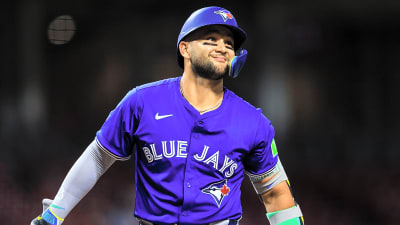Chelsea has never been shy in the transfer market, and this summer is no different. Despite already bringing in the likes of João Pedro, Liam Delap, and Jamie Gittens to revamp their forward line, the Blues are now turning their attention to one of the brightest attacking midfielders in Europe, Xavi Simons.
The Dutchman is edging closer to a move to Stamford Bridge, with RB Leipzig demanding a fee of around €70 million, and Chelsea believed to be leading the race for his signature. It’s a blockbuster move, no doubt, but one that comes with a big question: Is he needed? Where does Simons actually fit in this stacked Chelsea squad?
A Rare Talent Who Thrives Between the Lines
At just 22 years old, Simons has already had a footballing journey that most players would like to have. He came through La Masia, sharpened his edge at Paris Saint-Germain, lit up the Eredivisie at PSV, and has more recently become a creative focal point at RB Leipzig. Across all competitions, he’s bagged up 44 goal contributions in 76 appearances, and is now closing in on 30 senior caps with the Netherlands.
It is not just his arsenal that excites Chelsea. It’s the way he plays. Simons is a technician with a sharp eye for space, particularly effective in the left half-space, drifting centrally to dictate the rhythm of play. His ability to link midfield to attack, beat players on the dribble, and find passes others don’t even see makes him a perfect fit for a coach like Enzo Maresca, who thrives on positional play and intelligent movement.
Unlike some of Chelsea’s more raw talents, Simons doesn’t need time to grow into games; he’s already tested in battle. His stats from last season back that up. Eight goals, 11 assists in the Bundesliga, and an average of over five ball recoveries per 90. He works hard off the ball, presses with intent, and can adapt to multiple systems, traits that are golden in the Premier League.
Where Does He Fit?
Chelsea’s attack is, to put it mildly, crowded. Even if the likes of Christopher Nkunku and Raheem Sterling move on, as some reports suggest, the Blues still have Cole Palmer, Estevão Willian, Gittens, Pedro Neto, Enzo Fernández, and the recently signed Delap, and João Pedro vying for spots.
So where does Simons slot in? The obvious answer is in one of the two creative roles behind the striker. Maresca has leaned into a 4-2-2-2 shape, or hybrid variations of it, allowing for fluid movement across attacking lanes. In that setup, Simons could easily play as the central attacking midfielder, allowing Palmer to drift slightly right, where he’s at his best, operating in the half-space, outside of heavy midfield traffic.
Interestingly, Palmer’s numbers point to this being a lethal combo. In games where he’s played slightly wider or been given more freedom, he’s delivered 21 goal contributions in 25 appearances, including three in the Club World Cup final against PSG. Simons may not replace Palmer; he may unlock him further.
With Nicolás Jackson, Delap, or João Pedro leading the line, having both Simons and Palmer feeding the No. 9 would be a terrifying prospect for defenders. This isn’t just about adding depth; it’s about raising the ceiling of Chelsea’s attack.
Still, someone will have to make way. Estevão Willian, for all his promise and his recent £56m move from Palmeiras, may need to be patient. At 18, a period of adaptation was always on the cards, but Simons’ arrival could delay his real breakthrough even further.
There’s also the case of Romeo Lavia, who’s struggled with injuries since joining Chelsea. With Moises Caicedo and Fernández essentially locked into starting roles in midfield, Simons could be the one to edge Lavia further down the pecking order, especially in matches where Maresca wants more attacking impetus from midfield. However, in more cautious setups or during the intense Champions League schedule, Lavia might still have a key role to play.
More Than Just a Statement Signing?
Signing Simons would be about more than just adding another name to the squad. It would be a statement, a sign that Chelsea, after their Club World Cup triumph, are back to attracting Europe’s top young talent. Simons is different from the typical “project player” Chelsea has pursued in recent years. He’s young, yes, but also experienced, proven, and adaptable.
There will naturally be concerns. The Premier League is far more physical than the Bundesliga, and Simons’ slight frame could be a challenge early on. However, his intelligence, movement, and ability to adjust give him a fighting chance. Maresca has already shown he’s willing to tweak formations and rotate players to suit the moment.
More must-reads:
- Jose Mourinho returns to Benfica: A full circle moment for the 'Dark Lord of Football'
- Liverpool's last-gasp wins are anything but a fluke
- The 'Switch-hitter single-season HR leaders' quiz
Breaking News
Trending News
Customize Your Newsletter
 +
+
Get the latest news and rumors, customized to your favorite sports and teams. Emailed daily. Always free!








